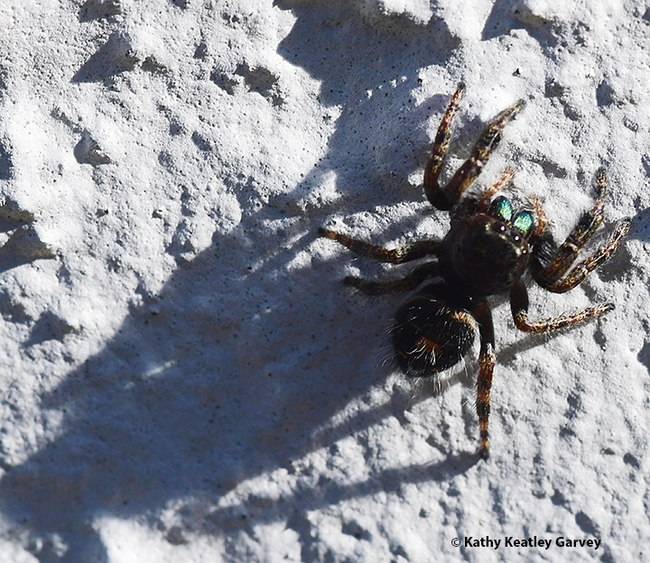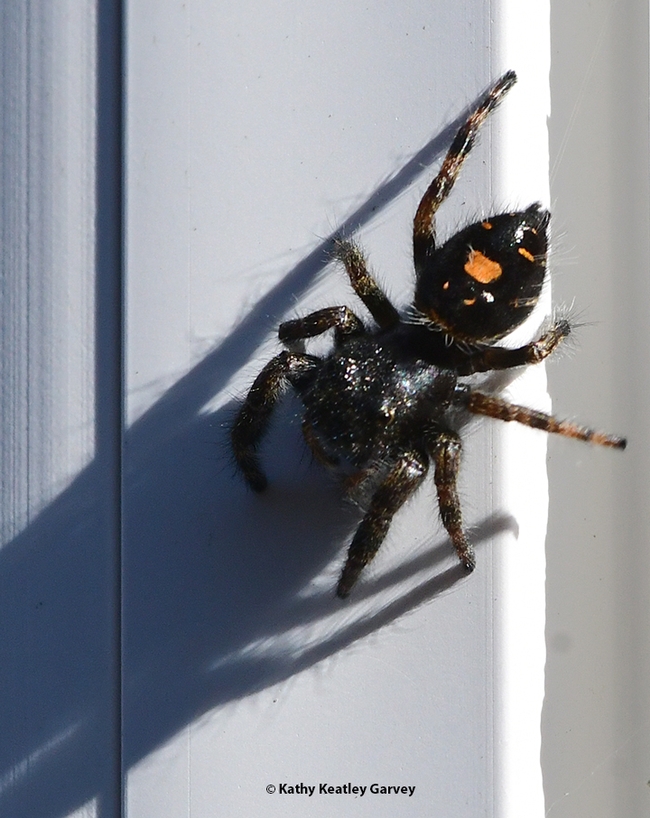Who doesn't love jumping spiders?
They're adorable. No? Well, they are to arthropod enthusiasts, but not so much to their prey.
This one (probably a Phidippus audax, a Bold Jumper) was moving slowly and unobtrusively up a shadowed Vacaville stucco wall on the morning of Jan. 2.
It may have been hunting for prey or simply seeking some sun.
The jumping spider, family Salticidae, is a thing of beauty, but to some folks it's a thing of fright.
Did you catch science writer James Gorman's article on How the Jumping Spider Sees Its Prey in the Nov. 6, 2018 edition of The New York Times?
"If you love spiders, you will really love jumping spiders," Gordon began, humorously adding that "If you hate spiders, try reading this article on dandelions."
"O.K., if you're still here, jumping spiders are predators that stalk their prey and leap on them, like a cat. They are smart, agile and have terrific eyesight."
Gorman pointed out that "It has been clear for a long time that their vision is critical to the way they hunt, and to the accuracy of their leaps. But a lot has remained unknown about the way their eyes work together." He then detailed the newly published research on spider vision by Elizabeth Jakob of the University of Massachusetts and her colleagues.
"Jumping spiders have eight eyes," Gorman gently reminded his readers (who were probably already reading about dandelions). "Two big eyes, right in the center of what you might call the spider's forehead, are the principal ones, and they pick up detail and color. Of the other three pairs, a rear set looks backward, a middle set is as yet a bit of a mystery, and the foremost detect motion."
The spider we saw on the stucco wall certainly detected our motion.
Somewhat like the phrase attributed to Julius Cesar's "I came, I saw, I conquered," our spider "came, jumped and vanished."
Goodbye, spider.
And no, I'm not going to read that article on dandelions.
Attached Images:

Well, hello there! A jumping spider moves slowly and unobtrusively up a shadowed Vacaville wall on Jan. 2. (Photo by Kathy Keatley Garvey)

The jumping spider shows its colors. It's probably a Phidippus audax: the species is black with a distinct irregular orange to white spot on the back of its abdomen. (Photo by Kathy Keatley Garvey)